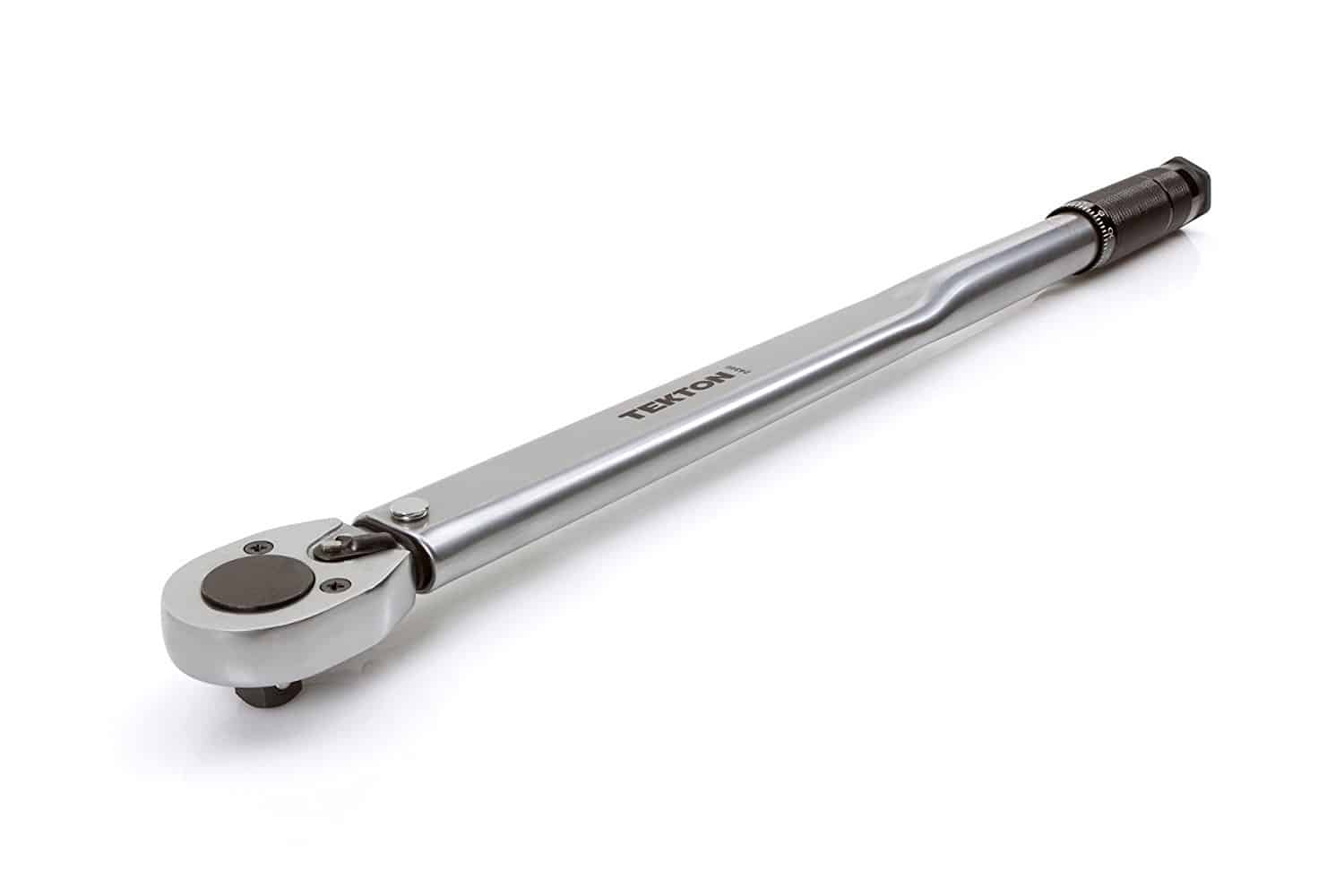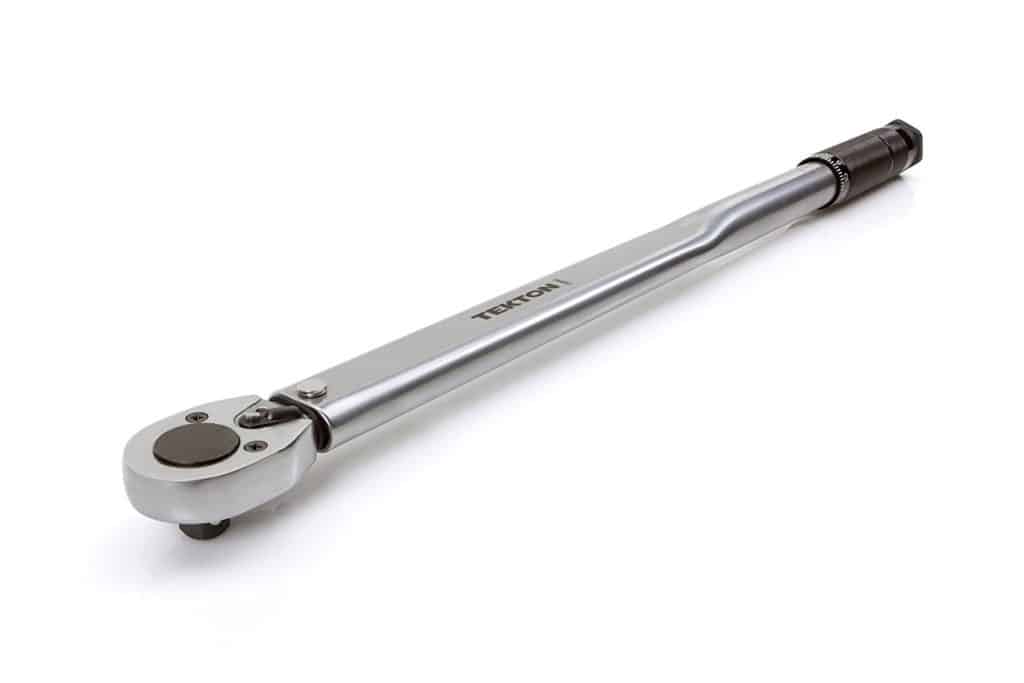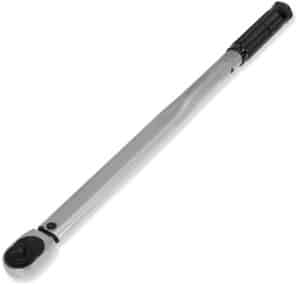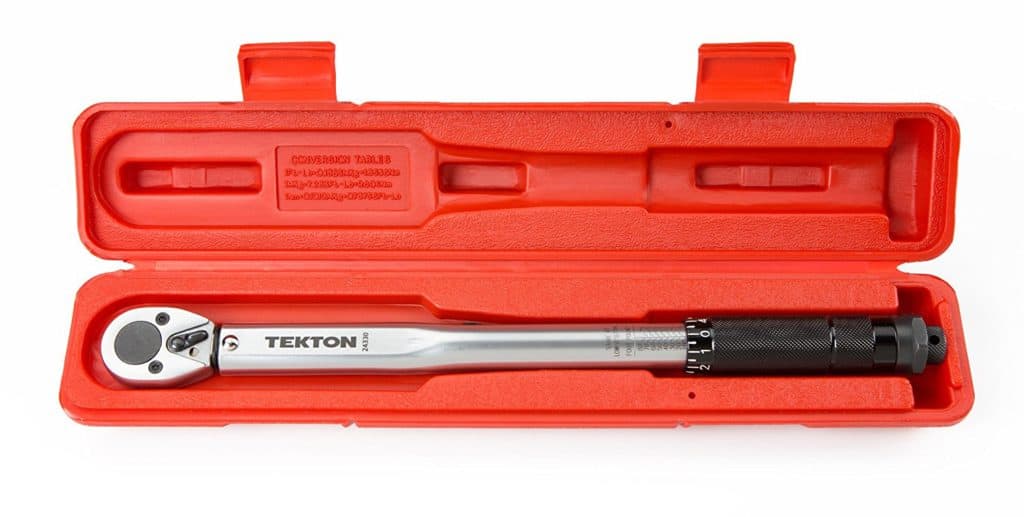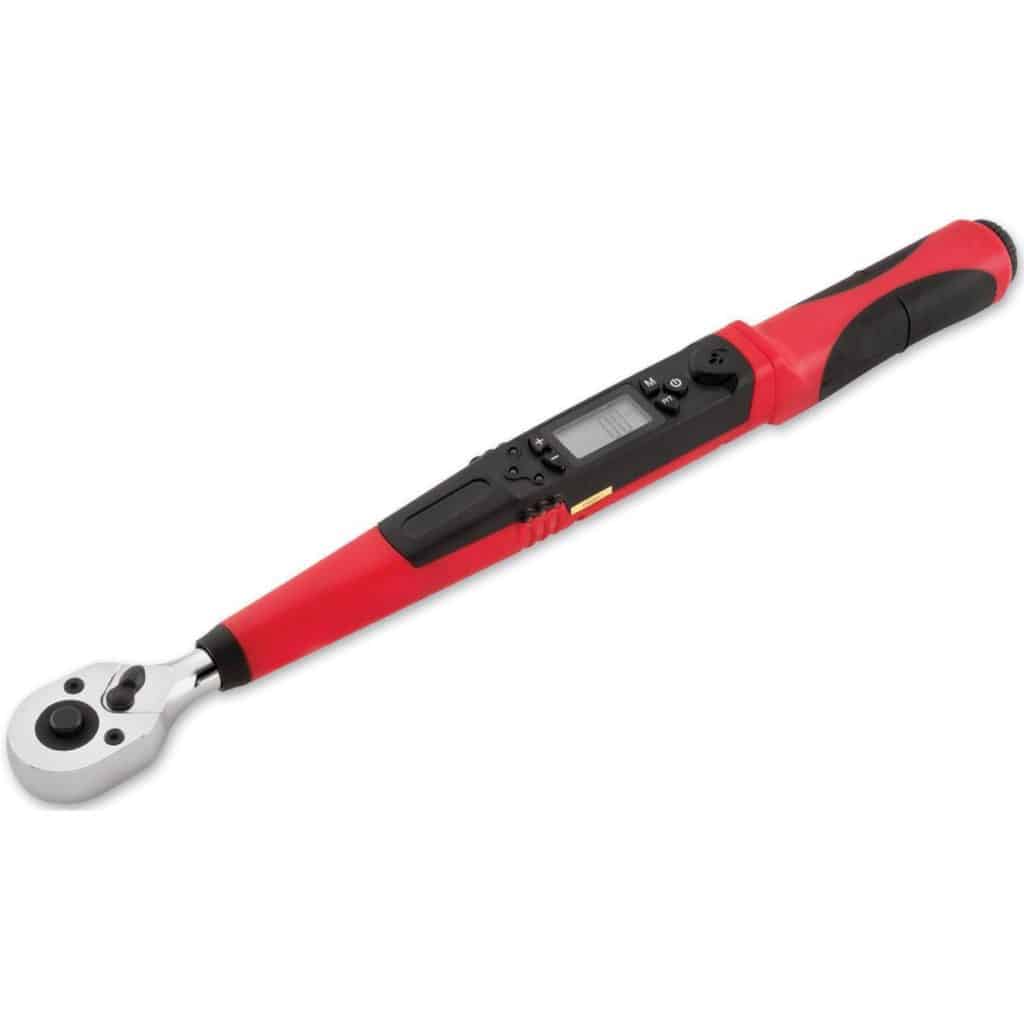Any time that you undertake a serious automotive project, there is almost always a need for a torque wrench, espescially if you are going to rebuild the engine or transmission. Over tightening is just as bad as under tightening a bolt in many cases, espescially if you are re-assembling a motor. Hopefully if you find yourself with the need for a torque wrench, this buying guide will help you find the right wrench.
Back in the day, a car was made mainly of steel and iron. If you over torqued something the car would be a little more forgiving. Today’s cars are made of steel, iron, plastic, and aluminum. These new materials strip out with ease. Having a good torque wrench is an indispensable part of your tool box now more than ever.
Borrowing Instead of Buying
If you think that you’ll rarely use a torque wrench, many auto parts stores offer a loan a tool program. You can borrow a great torque wrench for a day or two. You’ll usually need to leave a deposit equal in value to the tool, but will receive the whole deposit back when you return the tool in the condition you found it in. This is a great way to go if you can only see yourself using it once every few years. Here’s the page for Autozone’s loan a tool program. Check it out. It can save you some money.
Different Types of Torque Wrench
There are two major ways to distinguish torque wrenches. They will be any combination of:
- Indicator Type: This may be click, beam, or electronic.
- Drive Type: The size of part of the torque wrench that accepts the socket.
Indicator Types
There are really three main types of torque wrench. They are distinguished by the way that you set the desired torque and how they let you know you’ve tightened the bolt enough.
The first type is the one that most people think of when they think torque wrench. That is the click type. The beam type is simple and used to be more popular. The electronic torque wrench is relatively new and super accurate. We will go into depth on each below.
In the United States, torque is generally measured by LB. Pounds. A lot of the world uses the Metric standard Newton Meter. Always make sure your wrench has both.
Click Type
This type of wrench gives a satisfying click when the pre determined level of torque has been achieved. These wrenches usually have a higher max torque rating than the beam style.
Although during low torque situations, the click may be hard to hear. This type of torque wrench also has a ratcheting action to it, which is a huge convenience over having to pull the socket off of the bolt every time you need to reset.
Click type torque wrenches typically have a handle that will turn a torque level indicator. This will change what level of torque that activates the click. For most people we recommend this type of wrench. It is hard to over torque something when you are looking to feel a click.
Beam Type
Beam torque wrenches are simple in design and effective. They use a dial indicator that looks almost like a volt gauge to indicated the torque level. The main disadvantage to this type of indicator is that you must be observing the wrench itself in order to get a proper reading.
The beam type torque wrench may be for you if you are going to be using it casually, maybe a couple of times a year. In order to get the most out of the beam torque wrench, you really need to be able to gradually apply pressure to the wrench so that the torque gauge rises slowly and consistently.
Electronic
The electronic torque wrench works in the same basically the same as the click type version. The main differences are that you’ll hear an audible beep instead of a click when you tighten the bolt enough.a
This type of torque wrench is fantastic for professional mechanics and engine builders. Electronic torque wrenches have memory features that allow you to see the max torque that was applied to it, as well as a record of previous torques in case you need to go back and look at them for some reason.
Using a Torque Wrench
Using a torque wrench is about as easy as selecting the amount of torque you wish to apply and tightening the bolt. Torque wrenches are a bit more unwieldy than their ratchet counterparts, so it’s a good idea to go ahead and snug any bolt that you are preparing to torque.
Don’t use the torque wrench as a ratchet. They are precision instruments and will wear out prematurely under a heavy load. Some torque wrenches have the ability to loosen a nut. Don’t use them for that. Get a good breaker bar instead.
If you would like to know all about the proper operation of a click type torque wrench, here is a great video that does just that:
Drive Types
There are four drive types that torque wrenches are available in. They are 1/4, 3/8, 1/2, and 3/4 of an inch. These sizes correspond to the socket input size, the same as any normal ratchet would accept. Although if you are going to be doing a lot of high torque wrenching, it may be advisable to pick up a good set of impact sockets. You don’t want to break a socket off in an engine and have to deal with the extra metal going somewhere that it shouldn’t go.
¼” Drive- These wrenches usually have an indicator in inch pounds and not foot pounds. They really should be considered a specialty tool, and not the size you should get if you are looking to get only one torque wrench. Most of the time, these wrenches call for torque in inch pounds and not foot pounds. Typically these wrenches will only tell you torque to a maximum of 20 foot pounds before they have reached the end of their useful range. You may find a need for these when working with bolts that need torqued into plastic or aluminum.
3/8” Drive– This correlates to the most common ratchet size. The typical torque wrench in this size is going to fit anywhere that you would want to fit it and max out around 70-80 lb. pounds. That makes them great for almost all of the torque needs that you may encounter.
½” Drive– This is going to be the size that most people think of when they think torque wrench. These wrenches can torque up to 250 pounds before they run out of gas, which means they will work for nearly any thing that will come your way. If you are looking to get one size of torque wrench, this is the size that we recommend. This is the only size that will handle all the torque needs of most engine assemblies.
¾” Drive– Are you a dump truck mechanic? Awesome!! That’s about the only person who is going to need this thing!
Best 1/2″ Click Type Torque Wrench Picks
We recommend purchasing a click type torque wrench. They are easier to use than a beam type and you don’t have to question whether or not you’ve torqued the bolt enough. This will keep you from over tightening.
TEKTON 2430 1/2″ DRIVE TORQUE WRENCH
The TEKTON 2430 is our recommended toque wrench. It combines price, functionality, and durability into one great package. It is a fantastic addition to anyones tool box. Whether you only occasionally need a torque wrench or need one all the time, this will get the job done.
- 250 LB capacity means that you can torque nearly anything on a passenger vehicle and have capacity to spare.
- Has a very easy to read dual-raace scale.
- All metal construction means that there are not parts that are going to break down prematurely. Although, a rubber grip can feel if you are going to be using it all the time.
- Comes pre-pre-cablibrated within 4% in either direction.
EPAuto 1/2″ Torque Wrench
The EPAuto 1/2″ Drive torque wrench is a great value choice for those who want a great torque wrench at a great price. In the 1/2″ Category, we don’t recommend a torque wrench unless it has a 250 ft/lb. capacity, which you would need to change the balancer on an LS1 engine for instance.
- Max torque rating is 250 ft/lb.
- We love the non slip grip that is included with this torque wrench.
- Corrosion proof satin finish.
- Comes with a durable plastic carrying case.
- Pre-Calibrated to +/- 4%
Best 3/8″ Drive Torque Wrench
If you are going to buy one torque wrench, it should really be a 1/2″. You’ll find it to be useful for almost anything that you’d want to torque. That being said, there are some situations where having the convenience of a smaller torque wrench when working in tight spaces, a 3/8″ drive wrench will work great (assuming you don’t need to torque more than about 80 ft/lb.).
TEKTON 24330 Click Torque Wrench
The Teckton 24330 Click Torque Wrench is a fantastic choice if you need something a little smaller than a 1/2″ torque wrench, or if you need to torque something under the 25 ft/lb. minimum of the larger wrench. We love the durability and price of a Tekton torque wrench.
- Has a really great click feel.
- No plastic whatsoever.
- Torque Range is 10-80 ft/lb.
- All steel construction.
- Easy to read dual-range scale.
Best Digital Torque Wrench for Professionals
Serious mechanics and engine builders may want a torque wrench that is not only incredibly accurate, but also tells them the max torque that they’ve applied to a bolt. This can be very useful when tightening something like cylinder heads.
Digital torque wrenches do not click. They beep when max torque is reached. This is very handy when torquing toward the low end of a wrench’s capacity when it can be hard to feel the click.
BikeMaster 1/2″ Digital Torque Wrench
We recommend the BikeMaster digital torque wrench due to the simple digital controls, the way that it feels in your hand, and the durability from BikeMaster products.
- Display has automatic shut off to save battery power.
- Logs the last 50 items that you’ve torqued.
- 29.5 ft/lb.- 147.5 ft/lb capacity range.
Wrapping up: Torque Wrench Buying Guide
A torque wrench is a great tool to keep in your toolbox. Investing in one should provide a lifetime of dependable service when it’s taken care of.

